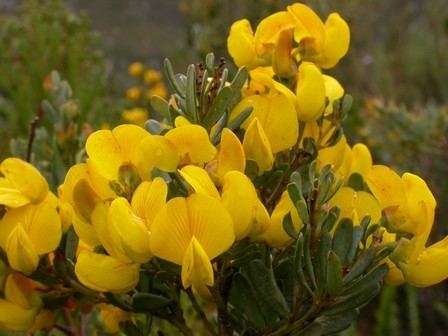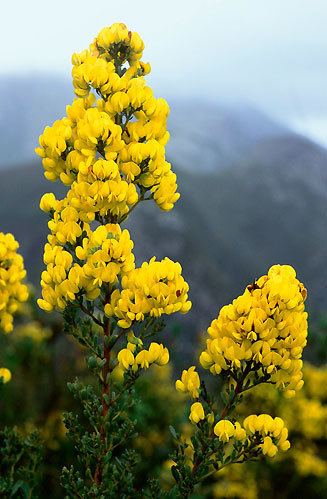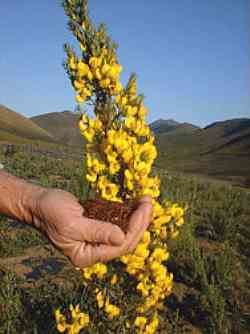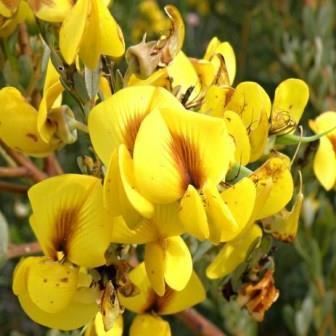Scientific name Cyclopia Rank Genus | ||
 | ||
Similar Rooibos, Aspalathus, Cyclopia intermedia, Agathosma betulina, Rose hip | ||
Cyclopia, better known by the common name Honeybush, or Heuningbos in Afrikaans, is a genus of some 20 species of flowering plants in the legume family, Fabaceae, of the subfamily Faboideae. The description was published by Étienne Pierre Ventenat in 1808. The name Ibbetsonia, published two years later, is regarded as a synonym of this genus; John Sims had commemorated the physiologist Agnes Ibbetson with this name.
Contents
- Cultivation and Use
- Tea preparation
- Chemistry
- Species
- Section Aequalis
- Section Cyclopia
- Section Marsupium
- Section Praegnans
- Section Truncatae
- References

Cultivation and Use

The leaves of honeybush are commonly used to make herbal teas. It grows only in small areas in the southwest and southeast of South Africa and has many similarities with rooibos.

Honeybush is so named because the flowers smell of honey. The taste of honeybush tea is similar to that of rooibos but a little sweeter. In some rural districts it used to be common practice to keep a kettle of honeybush tea infusing on the stove ready for drinking while scenting the whole house — unlike tea prepared from Camellia sinensis, the product does not turn bitter with long-term simmering.

There are dozens of species of honeybush tea found in the wild, of which mainly 4 or 5 are in widespread home or commercial use. These are:


Some species can be cultivated whereas others have resisted all attempts at cultivation and must be harvested in the wild. It is not always easy to discover what the seeds need to enable them to germinate; some kinds bear elaiosomes and might be dependent on the services of particular ants or birds. Cyclopia intermedia (mountain tea) is one of the teas that is harvested in the Kouga mountains where it grows naturally. Mountain tea regenerates within three years after harvesting or devastation by fire; consequently less than one third of the mountain yield is available for harvesting each year by rotation.
Mountain tea and valley tea flower in September/October whereas coastal tea flowers in May/June.
Tea preparation
There are two methods of processing honeybush for use in tea. In the traditional method, the leaves of the bush are harvested, cut and bruised (often with mechanical rollers), and then left in the sun to oxidise. The modern, industralised process oxidises the leaves in rotating, heated tanks at temperatures of 70–90 °C, for two to three days. The leaves are then air-dried.
Afterwards, the leaves are sifted and graded according to the application:
Chemistry
Honeybush is low in tannin (0.45%). Some of the bioactive compounds present in honeybush include:
Species
Cyclopia comprises the following species:
